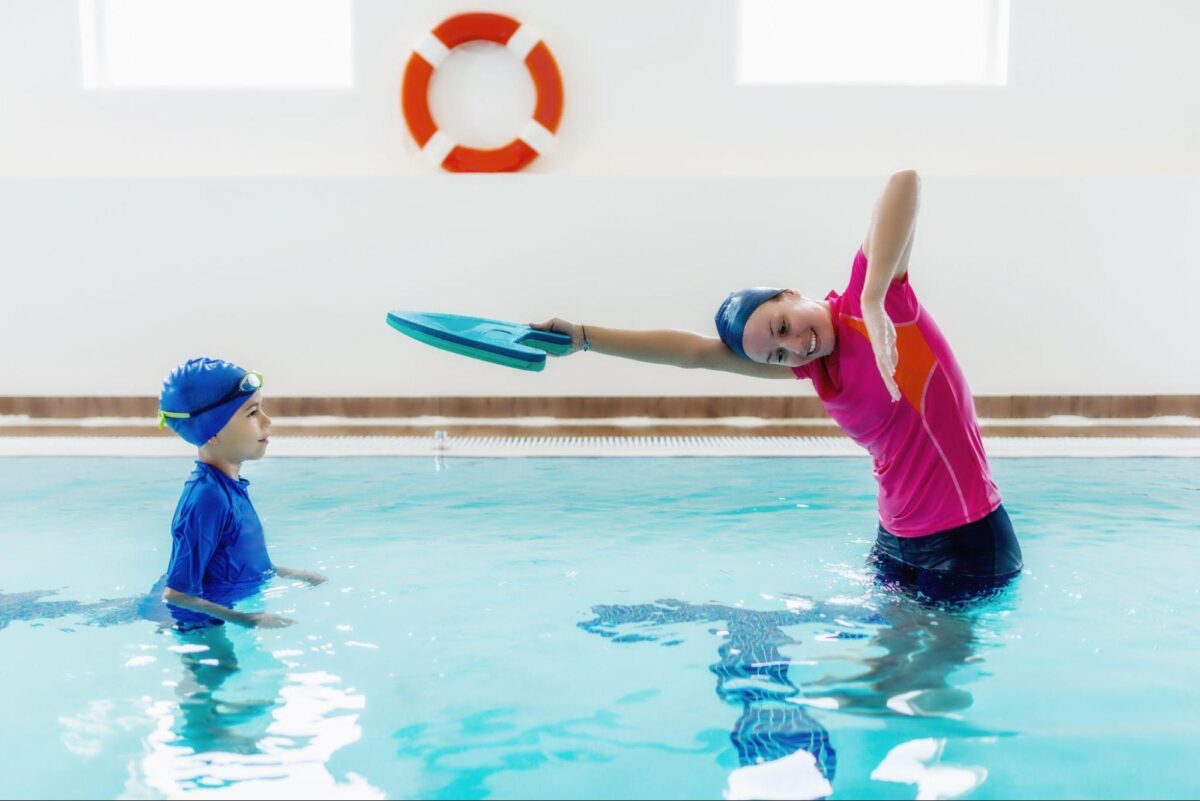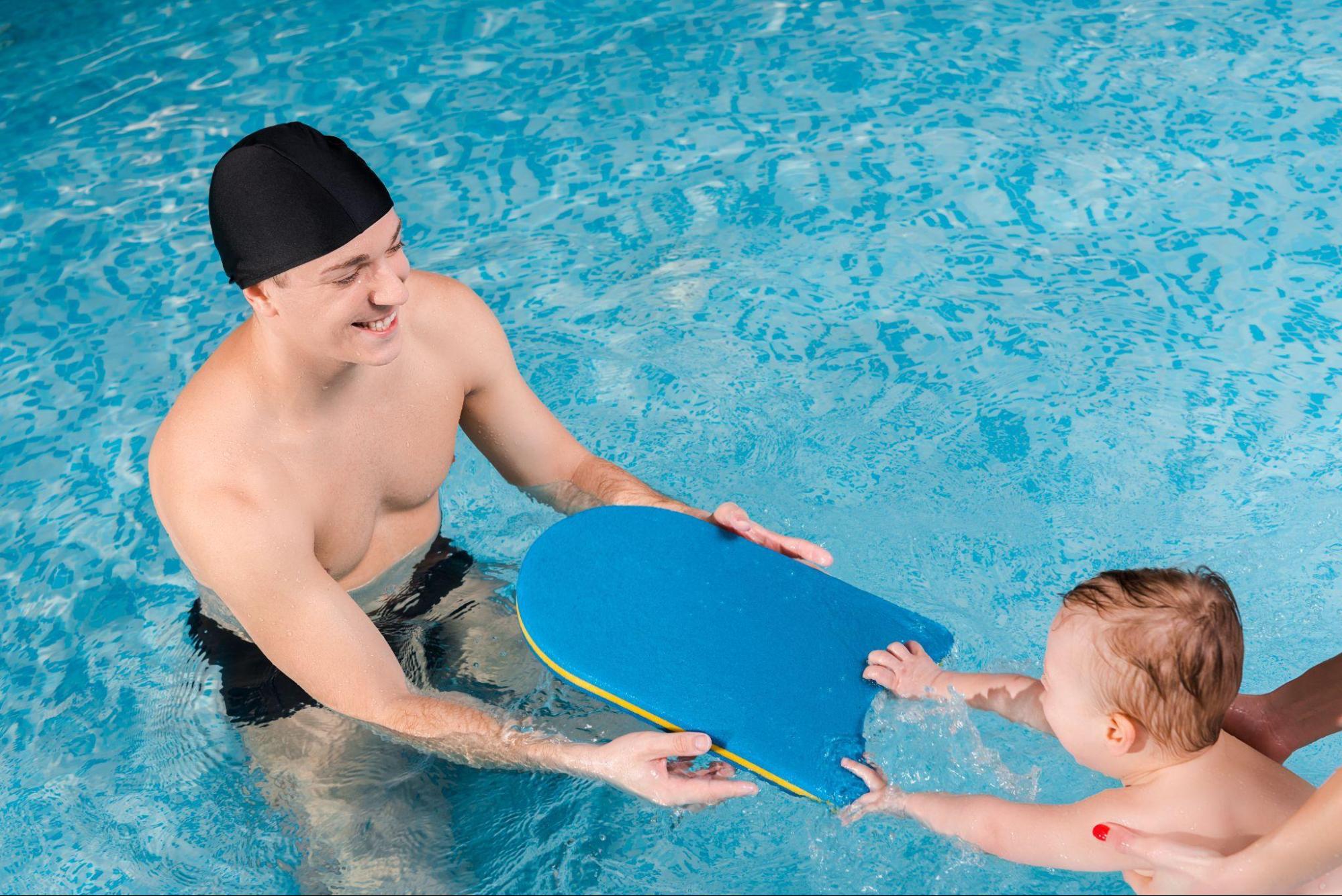7 Common Swimming Myths: Debunked for Good

by Coach Mark
Swimming has always been surrounded by a wave of advice, but not all of it holds water. From the age-old warning that you have to wait for 30 minutes after a meal before hopping into a swimming pool to the belief that chlorine turns hair green, many of these so-called “rules” are myths that continue to influence how people view the sport.
So, what are some of the common misconceptions that can be debunked to help you approach swimming with a clearer mindset and improved technique?
1. Myth #1: You Must Wait 30 Minutes After Eating to Swim
For generations, swimmers have been cautioned, “Wait at least 30 minutes after eating before swimming,” to avoid painful stomach cramps or even the risk of drowning. However, the dangers of swimming after eating are essentially a myth.
While it is true that blood flow is temporarily diverted during digestion, there are no medical reasons to wait before swimming. Additionally, it is evident that engaging in exercise immediately after a large meal may be slightly uncomfortable for some, but it is in no way dangerous. The key is simply to listen to your body and follow normal safety precautions.
2. Myth #2: Hold Your Breath Underwater
Many swimmers believe that holding their breath underwater is the best way to stay afloat and conserve energy, but this is a common misconception. In reality, holding your breath creates tension in the body, which can increase anxiety and disrupt stroke rhythm.
In contrast to this myth, swimmers are taught to exhale steadily while underwater and inhale quickly when they turn their head above the surface. This rhythmic breathing technique during swimming helps keep the body more relaxed while also improving oxygen flow, reducing fatigue, and enhancing overall water efficiency.
Moreover, by syncing breath with stroke timing, swimmers develop smoother swimming techniques, making swimming feel more natural and sustainable over longer distances.
3. Myth #3: Chlorine Turns Hair Green
One of the most persistent swimming myths is that chlorine turns your hair green, especially for blondes. In reality, it’s not chlorine itself but copper in the water. Chlorine acts as a catalyst by oxidizing copper, which then attaches to the hair shaft, causing a greenish tint.
To prevent and reverse this effect, a few simple habits go a long way.
For instance:
- Wetting your hair before getting in.
- Applying a leave-in conditioner or oil.
- Wearing a swim cap helps block the oxidized metals.
- After exiting the pool, rinse immediately and use a clarifying shampoo to remove any residual discoloration.
4. Myth #4: You Must Have the Right Body Type for Swimming
A common myth is that only individuals with a specific body type are naturally suited for swimming. However, this belief overlooks the fact that swimming success depends far more on technique, practice, and mindset than on physical build. While body composition may influence buoyancy or speed in competitive settings, it does not determine whether someone can learn to swim effectively.
At Marsden Swim School, we recognize that every swimmer is unique, which is why we offer inclusive swimming classes for all ages and skill levels. This ensures that everyone has the opportunity to thrive in the pool, regardless of their body type.
5. Myth #5: Faster Arm Movement = Faster Swimming
Another common myth among swimmers is that moving their arms faster automatically makes them swim quicker. In reality, true speed comes from efficiency rather than sheer pace. Rapid, uncontrolled arm movements often waste energy and create drag, slowing a swimmer down.
Instead, focusing on proper body positioning, streamlined strokes, and effective coordination between arms and kicks allows swimmers to cover more distance with less effort. That’s why our coaches prioritize teaching stroke mechanics and rhythm, helping swimmers build efficiency, conserve energy, and swim faster.
6. Myth #6: You Don’t Need to Hydrate While Swimming
The next popular myth is that being surrounded by water means swimmers don’t need to worry about hydration. However, this belief can be misleading, as swimming is still a physically demanding activity that causes the body to sweat, even if it isn’t as obvious in the pool.
Just like runners or cyclists, swimmers lose fluids through perspiration and increased breathing rates, which can lead to dehydration over time. Thus, maintaining proper hydration before, during, and after swimming class is essential, as it helps regulate body temperature, sustain energy levels, and support overall performance. This is especially true during long training sessions or competitive meets, where endurance and focus are critical.
7. Myth #7: Adults Can’t Learn to Swim Effectively
Some people also believe that if you didn’t learn to swim as a child, it’s too late to start as an adult. However, this couldn’t be further from the truth. With the right guidance, patience, and consistent practice, adults can become capable swimmers at any stage of life.
We understand that adults and children have different learning needs, which is why our programs are designed to support every age group. Through expert instruction and a growth-focused approach, our curriculum helps swimmers of all abilities build skills step by step, overcome fear, and achieve lasting confidence in the water.
Turn Swimming Myths into Skills with Marsden Swim School

When myths are replaced with facts, swimming becomes less intimidating and far more enjoyable. With the proper guidance, swimmers can focus on developing real skills and enhancing their efficiency.
That’s exactly what we do at Marsden Swim School, providing expert coaching leveraging proven techniques and a supportive environment at our Bukit Timah swimming pool and other locations. This approach helps swimmers of all ages build skills, overcome challenges, and enjoy the water.
Whether you want to enroll your child in our swimming class for kids or take the plunge yourself, get in touch with us and discover how the right instruction can turn swimming into a lifelong skill.

